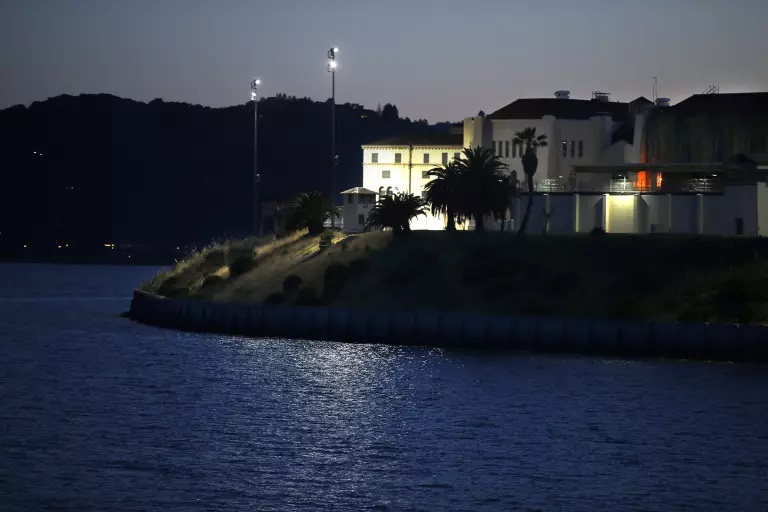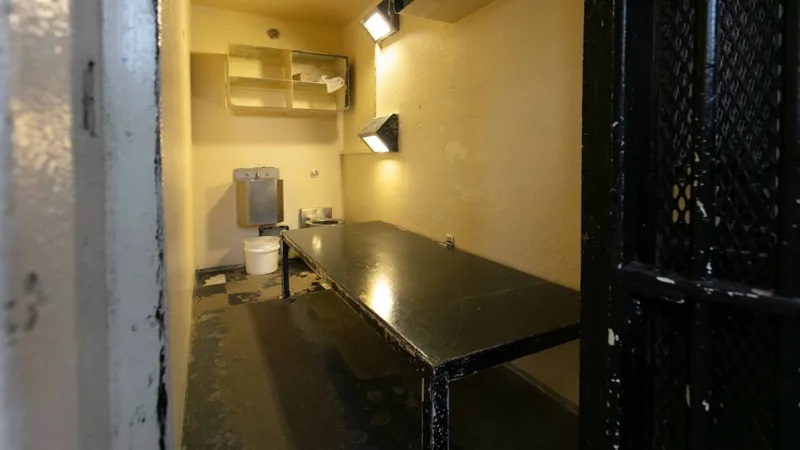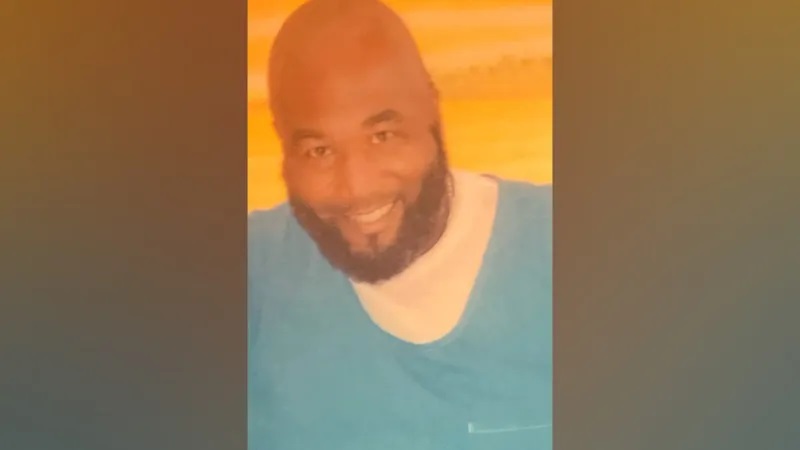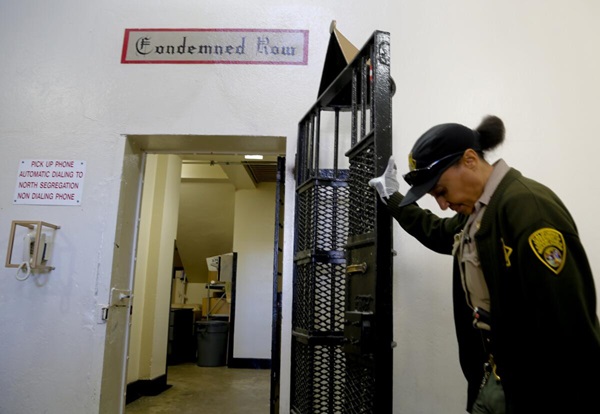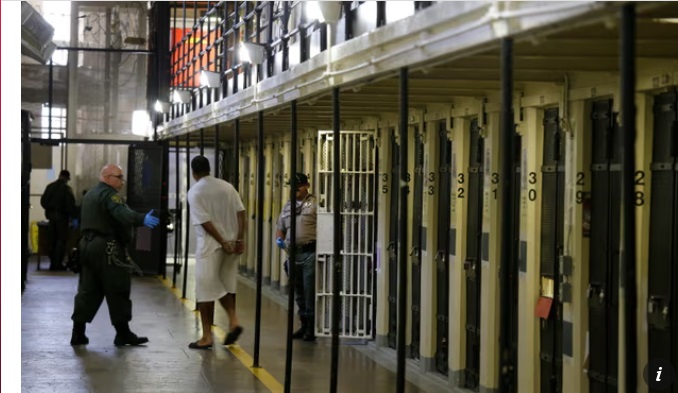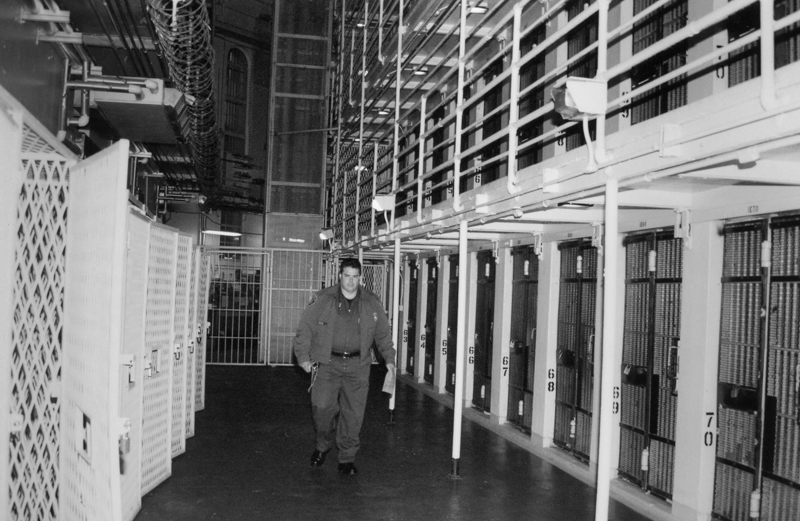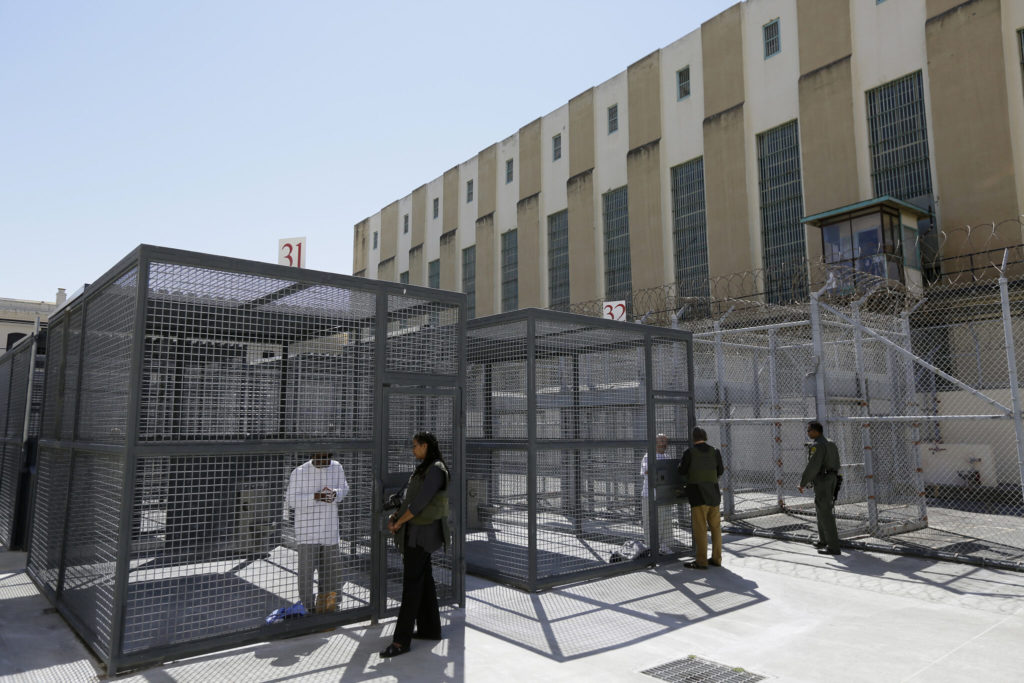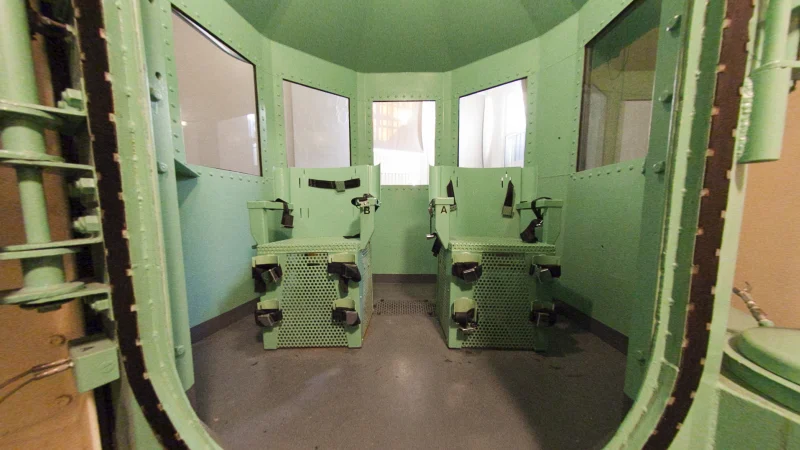Warning: Graphic content, readers’ discretion advised. This story contains a recollection of crime and can be triggering to some readers discretion advised.
California is accelerating its efforts to empty San Quentin’s death row, with plans to transfer condemned inmates to other state prisons by the summer.
An executive order was signed five years ago that imposed a moratorium on the death penalty in the US state – the last state execution there was in 2006. Sky’s James Matthews was given a rare look inside and met prisoners held in extreme conditions.
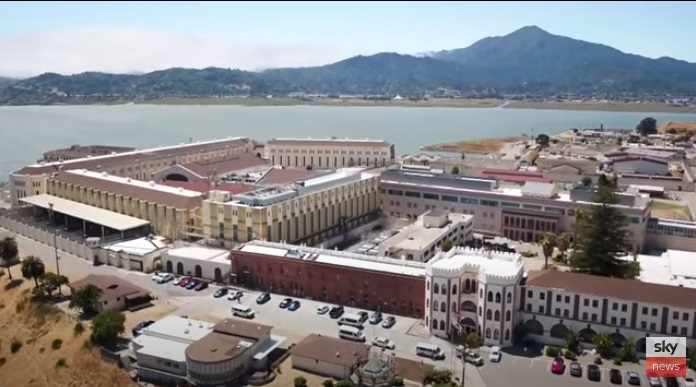
california’s most dangerousmen get sent here
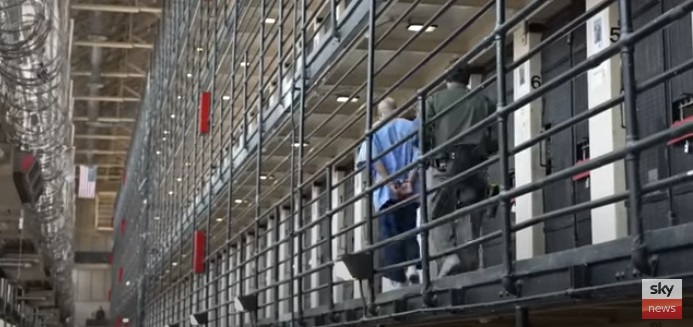
san Quentin’s deathrow ohuses ‘s america’deathrow. they rarely allow cameras onto the condemned block.
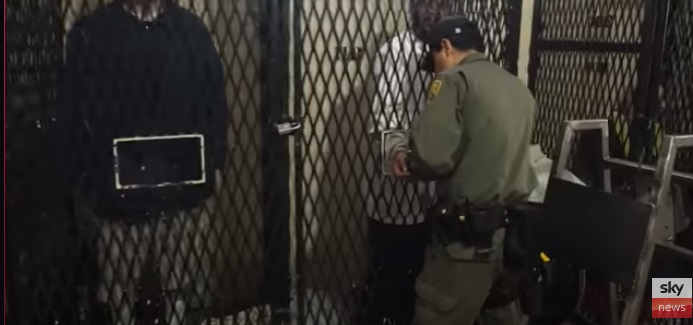
but sky news has been given acess to be here is to meet californias most notorious. they are among socity’s most segregated .
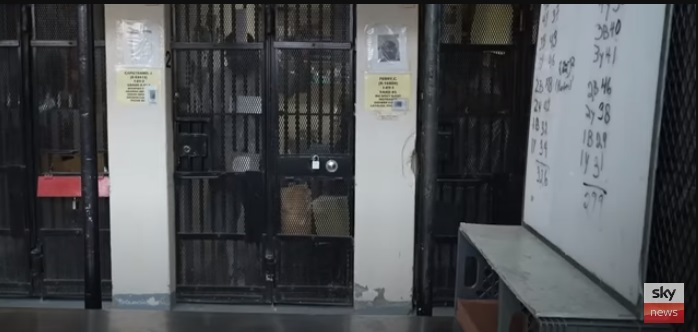
here everyone has a story …. a dark one.
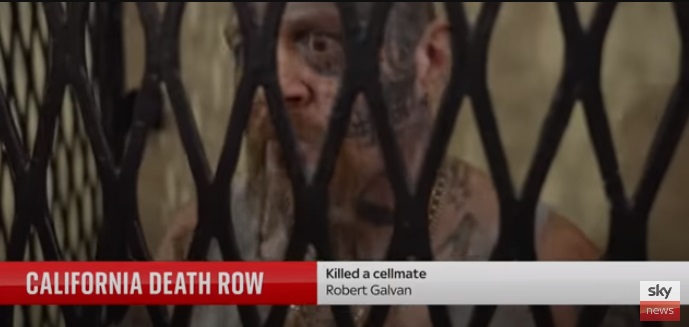
like robert galvan he was serving life for kidnap and then killed his cellmate so he could sent to deathtrow in search of a laywer. now he’s got a good lawyer and and apeal.
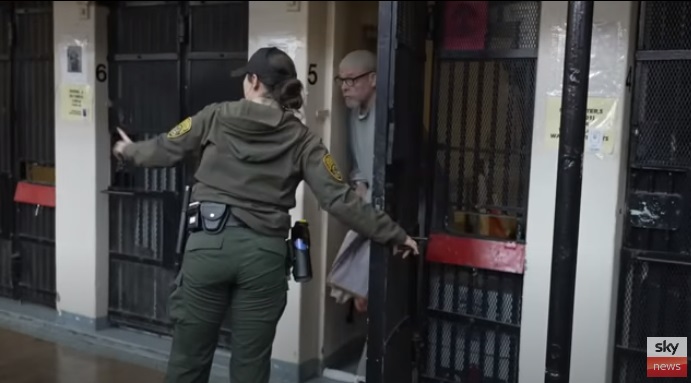
here in deathrow prison lives in a cell 4 ft by 10 . they’re allowed out 20 hours a week but only after a strip search in handcuffs.
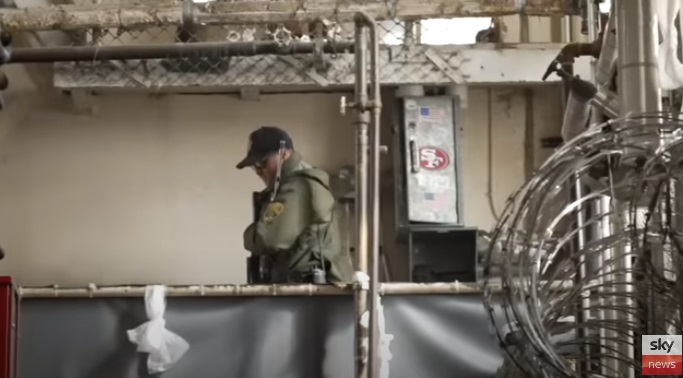
and watched constantly. by armed patrol.

in San Quentin there are currently more than 300 prisoners.
housed on five floors in in death row.
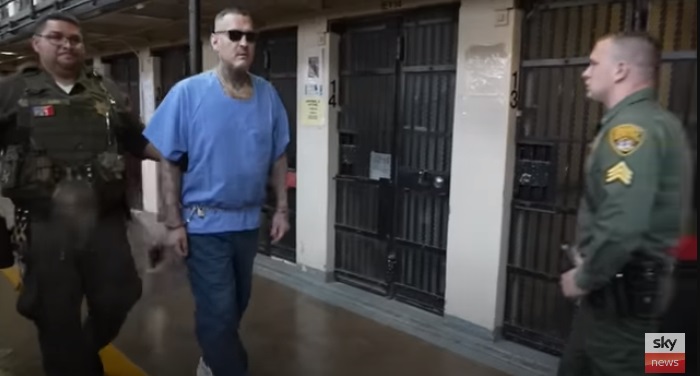
but they won¨t be here much longer.
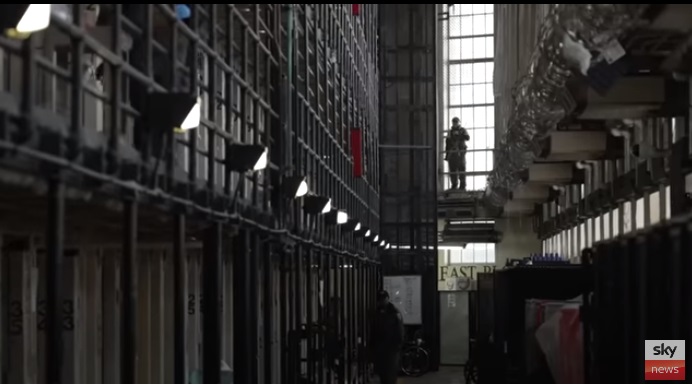
deathrow is dying a death itself
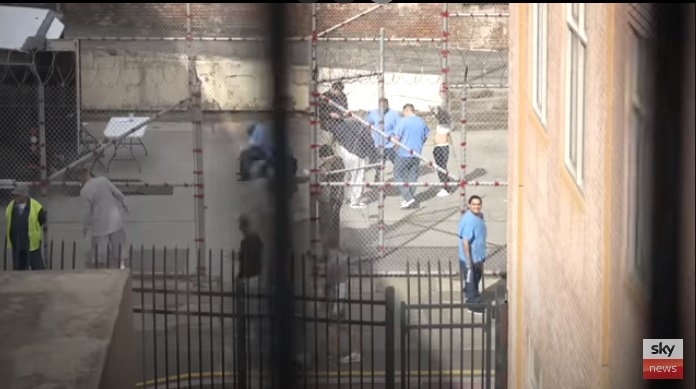
not everyone at san Quentin i son deathrow, soon nobody will be . it’s demise is designed with an emphasis on rehabilitation.
prisoners moved on from here will still have a death sentence alhough in reality they’ll be serving life without parole that willl only change if there’res a reversal in in policy.

california’s govenor imposed a moratorium on the death penalty stating that it was state sponsored premeditated murder and ending up here was based more on wealth and race than guilt or innocence.

“being able to learn a new trade, socialize amongst everyone , i think it’ll be beneficial. it will basically allow them to start paying back restitution to their victims and taking a responsibility for their action .”
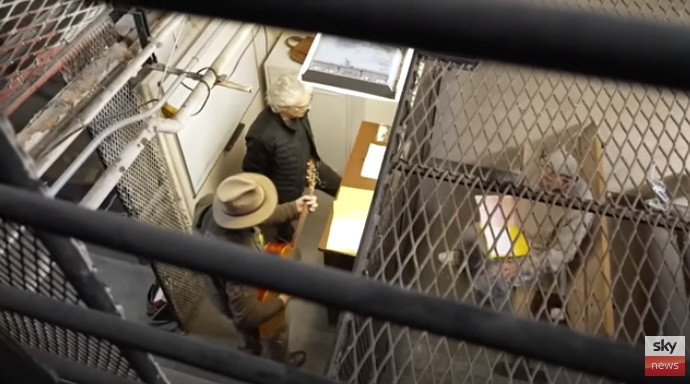
this move doesn’t chime with everyone victims groups have voiced they objections to condemned inmates avoiding execution. it’s known here as walking the last mile, in san Quenting they’ve gone the greater distance.
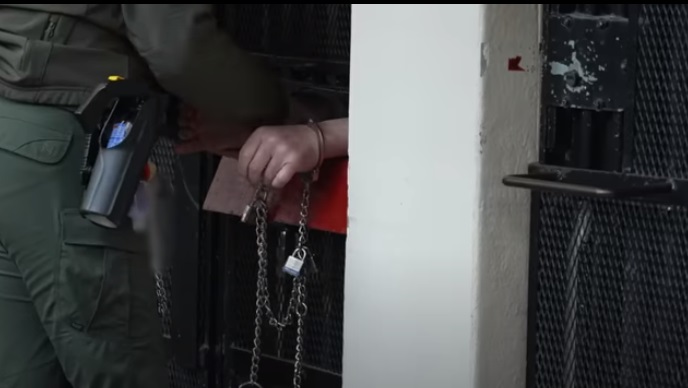
outlasting a death sentence by outlasting death row.
San Quentin begins prison reform – but not for those on death row
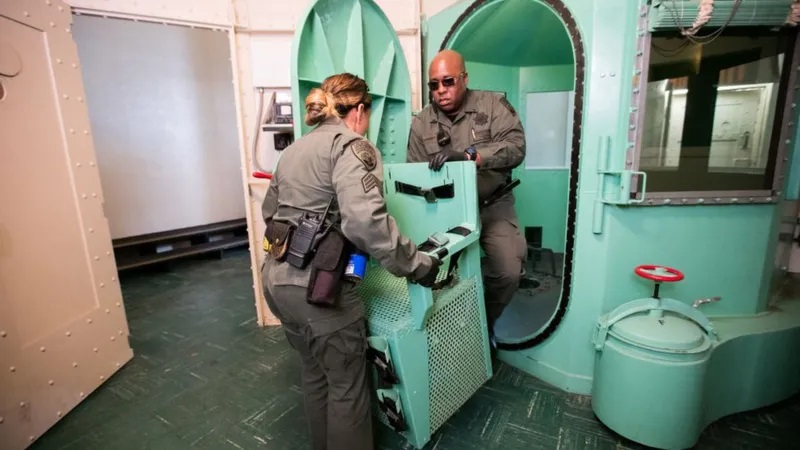
San Quentin’s gas chamber was used for over 100 executions
California is transferring everyone on death row at San Quentin prison to other places, as it tries to reinvent the state’s most notorious facility as a rehabilitation centre.
Many in this group will now have new freedoms. But they are also asking why they’ve been excluded from the reform – and whether they’ll be safe in new prisons.
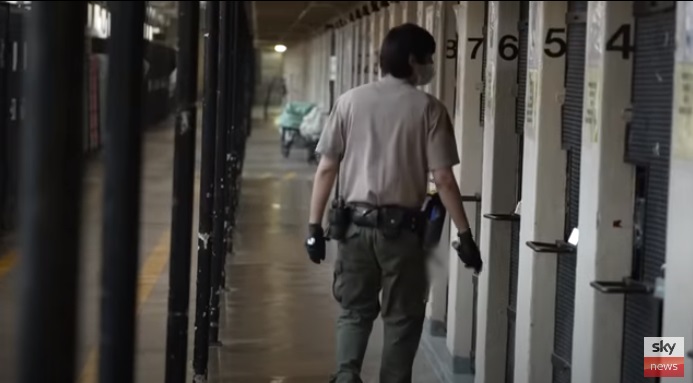
Keith Doolin still remembers the day in 2019 when workers came to dismantle one of the United States’ most infamous death chambers.
He was in his cell at San Quentin prison on the north side of San Francisco Bay, watching live footage on television showing an execution chair – where 194 people had been put to death – carried away after more than 80 years of use. The green gas chamber being taken apart was just several hundred feet from where he sat.
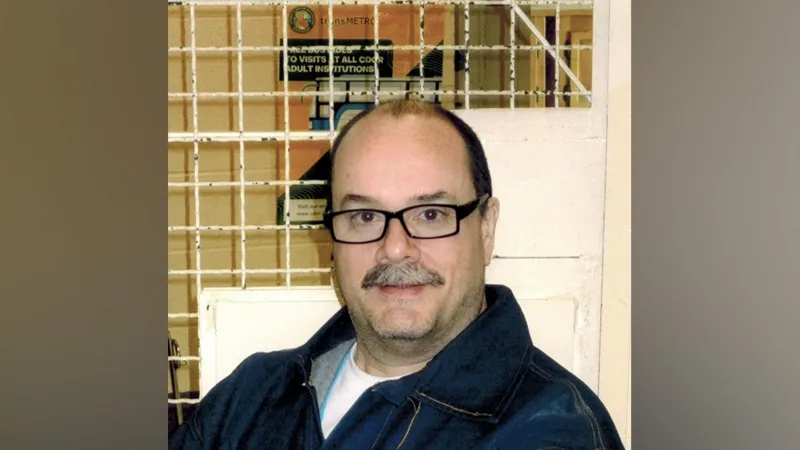
Keith Doolin, who was convicted of murder in 1996, says he is worried about his transfer to another California prison
A former long-distance truck driver convicted of murder, Doolin has spent nearly 23 hours a day for the last 28 years in a tiny cell. He long worried he would one day be shackled to a mint-green chair and executed.

But in the last few years, California has been moving fast with some plans for prison reform. Governor Gavin Newsom’s decision to deconstruct the death chamber – and also place a moratorium on the death penalty in the state – was a watershed moment for Doolin.
“He [Newsom] was sending the message: ‘Look, it might take a while, but things are going to change’.”
Mr Newsom is now seeking more changes at San Quentin, which currently has the nation’s largest death row. The governor announced last year that he planned to transform the state’s oldest prison into a rehabilitation centre.
He will close the prison’s death row unit and move Doolin and the other 532 death row inhabitants to standard prisons across the state in the coming months (70 have been moved already).
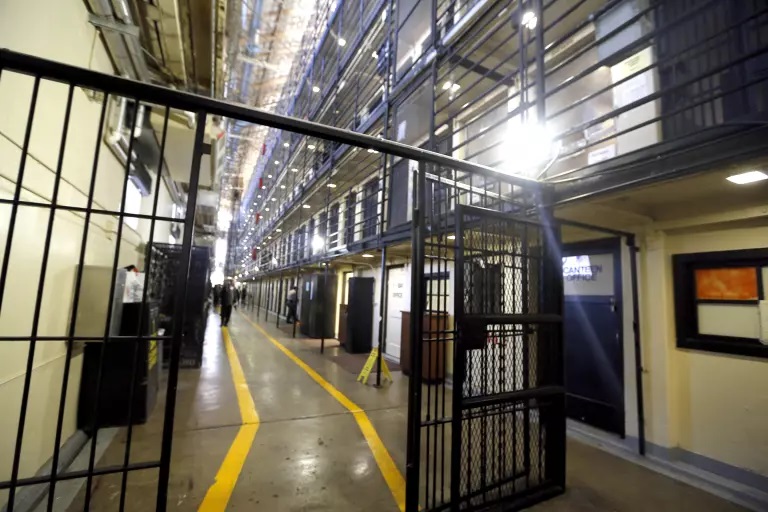
Doolin and his neighbours will still have death sentences – meaning they will spend the rest of their lives in prison. For some, the threat of execution still looms large, as a future governor could reinstate the state’s death penalty.
Six people on death row who spoke to the BBC over the phone shared mixed feelings about their move. Some were elated by the opportunity to live closer to family and step outside their cells without handcuffs, while others were terrified at the prospect of starting over after decades living alone in a cell.
Rats, birds and handcuffs: Life on death row
Built in 1852, San Quentin is California’s oldest prison and the state’s only facility for incarcerated males who have been sentenced to death. Since 1893, 422 people have been executed there, including by gas, hanging or lethal injection.
Family members walk by the entrance to the prison’s execution chamber every time they visit their loved ones, said Doolin’s mother, Donna Larsen, who drives a nine-hour round trip once a month to visit her son.
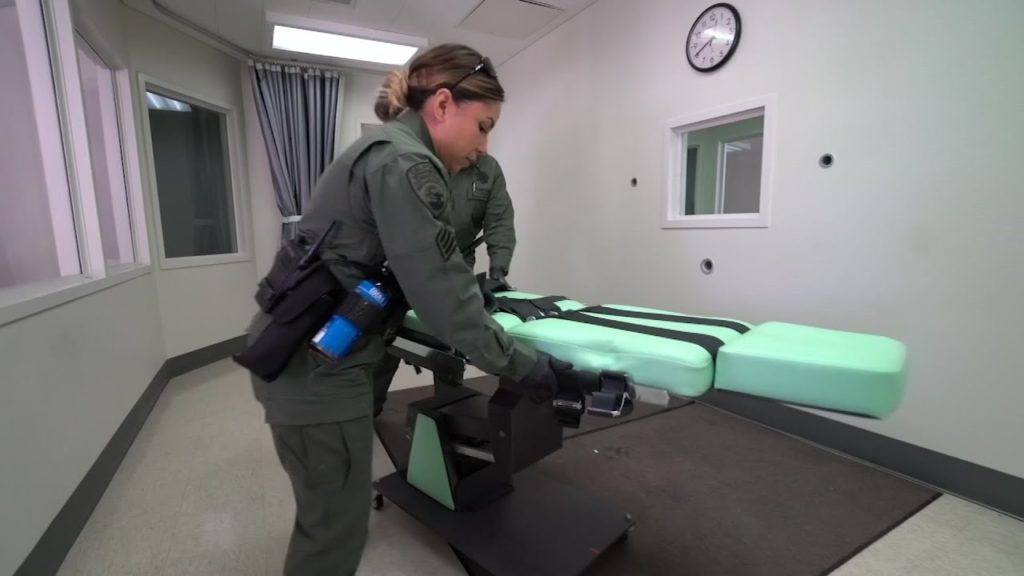
San Quentin’s execution chamber dismantled
The execution chamber would emit a green light that turned red as a person was being executed, a sight visible to Californians driving by on the highway, she said. This green room of death – and infamous incarcerated people such as cult leader Charles Manson – have brought international notoriety to San Quentin, featured in podcasts, television shows and films.
When Ramon Rogers arrived at the prison in 1996, rain leaked through the ceiling of the death row unit, and mice and rats would run rampant. But the biggest pests, he said, were the birds.
“They started defecating all over the place – all over the railings,” he said. “It was a gross environment.”
Since then, life on death row has remained restrictive and, at times, hazardous.
An outbreak of Covid-19 during the height of the pandemic killed at least 12 people on death row – part of a wider coronavirus surge at the prison that infected 75% of the population.
